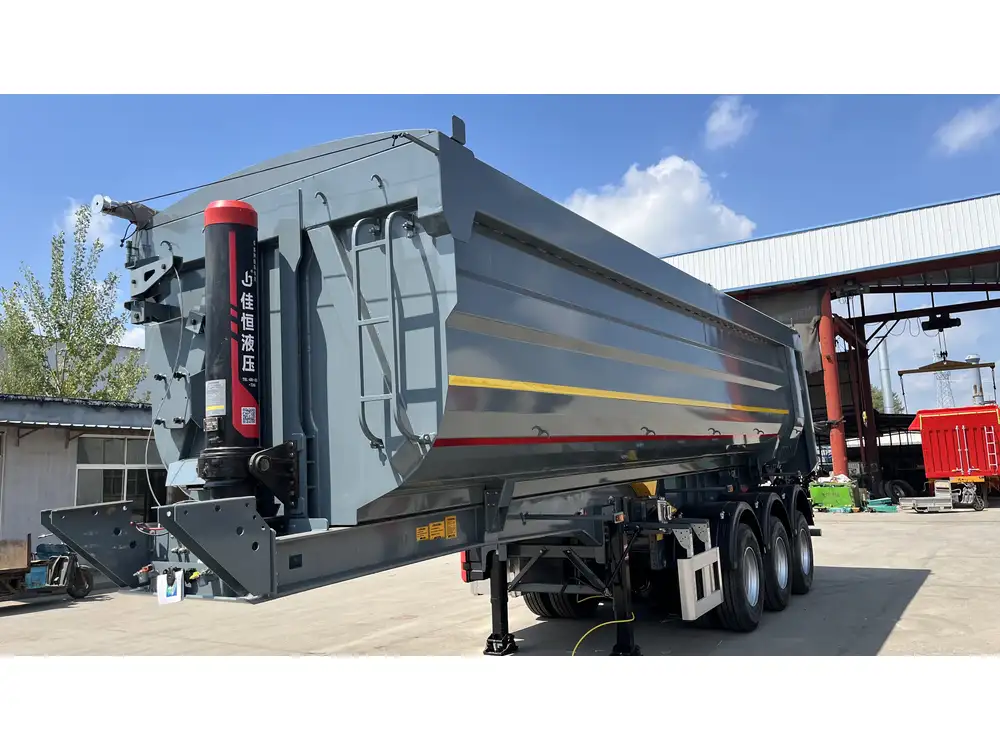Proper brake adjustment on semi-trailers is not merely a recommendation; it is an imperative for safety and efficiency in the transportation industry. When trailers experience wear and tear, the braking system may become misaligned, potentially leading to performance issues or dangerous scenarios on the road. This extensive guide aims to provide an in-depth understanding of semi-trailer brake adjustment, outlining essential processes, common questions, and the importance of regular maintenance.
Understanding Semi-Trailer Brakes
Before delving into the adjustment processes, let’s dissect the essential components of a semi-trailer brake system. The two predominant types of brakes used in semi-trailers are air brakes and electric brakes. Both systems possess unique operational mechanics and require specific maintenance practices.
1. Types of Brakes
| Brake Type | Description | Common Usage |
|---|---|---|
| Air Brakes | Operated by compressed air; uses a system of chambers to activate and release the brakes. | Heavy-duty trucks, most standard semi-trailers. |
| Electric Brakes | Operated electronically; generally includes magnets that engage with a drum when electricity flows. | Lighter trailers or those weighing under 15,000 pounds. |

The Importance of Brake Adjustment
Proper brake adjustment on semi-trailers is critical for several reasons:
- Safety: Well-adjusted brakes ensure effective stopping power, vital for avoiding accidents.
- Regulatory Compliance: Many jurisdictions mandate specific brake performance standards for heavy vehicles.
- Cost Efficiency: Proper adjustments reduce wear on components, extending the lifespan of the braking system and ultimately saving costs.
According to the National Highway Traffic Safety Administration (NHTSA), improperly maintained brake systems are a common factor in many truck-related accidents. Regular maintenance, including brake adjustments, can mitigate these risks.
Signs You Need to Adjust Semi-Trailer Brakes
Identifying the need for brake adjustment is essential for truck drivers and fleet operators. Here are several indicators that your semi-trailer brakes may require immediate attention:
- Increased Stopping Distance: If your trailer takes longer to stop or requires greater pedal pressure, this is a clear sign of misalignment.
- Uneven Brake Wear: Checking the brake pad thickness can indicate uneven wear, necessitating adjustment.
- Brake Failure Warning Lights: Modern trucks may be equipped with systems that alert drivers to brake issues.
- Unusual Noise: Screeching, grinding, or any inconsistent noises while braking are signals that the brake system is out of balance.
Quick Checklist for Brake Condition Assessment
| Indicator | Action Required |
|---|---|
| Increased Stopping Distance | Schedule adjustment immediately. |
| Uneven Brake Wear | Inspect and balance brake components. |
| Warning Lights | Diagnostic check needed. |
| Unusual Noise | Immediate inspection. |

How to Adjust Semi-Trailer Brakes
Adjusting semi-trailer brakes is a meticulous task that can vary depending on the type of brake system. Below is a detailed guide on the adjustments for both air and electric brake systems.
Adjusting Air Brakes
- Pre-Inspection: Conduct a visual inspection of the brake components, checking for visible wear or damages, including brake pads, shoes, and drums.
- Adjusting the Slack Adjuster:
- Locate the slack adjuster, which is commonly found connecting the brake chamber to the brake rod.
- Using a wrench, rotate the adjuster in the desired direction (clockwise for tightening).
- Measure the pushrod travel: it should not exceed the manufacturer’s specifications (typically 1-2 inches for air brake systems).
- Functional Testing:
- Conduct a brake test to ensure the system responds correctly. This involves applying the brakes and checking if the trailer stops evenly.
- Final Inspection: Recheck all components and ensure they are securely fastened; make any necessary adjustments to the air pressure settings.
Adjusting Electric Brakes
- Initial Assessment: Perform a visual check of the brake shoes and drums for wear, noting any significant deviations from normal wear patterns.
- Manual Adjustments:
- Find the adjustment mechanism, usually located between the brake shoes.
- Use a screwdriver to turn the adjusting wheel. Turn it clockwise until the shoes are snug against the drum.
- Back it off slightly to ensure free movement.
- Check Voltage: Ensure the power supply to the brake actuators is consistent, as this can affect performance.
- Final Testing: Take the trailer for a test drive to evaluate braking efficiency, making any needed adjustments based on performance.

Standard Adjustment Frequency
| Brake Type | Recommended Adjustment Interval |
|---|---|
| Air Brakes | Every 5,000 miles, or as needed. |
| Electric Brakes | Every 3,000 miles, or as needed. |
When to Seek Professional Help
While understanding the adjustment process is invaluable, not every adjustment can or should be performed by an inexperienced individual. Here are situations where professional assistance is advised:
- Complex Brake Systems: Trailers equipped with advanced braking systems, such as antilock or electronic brake force distribution systems, may require specialized knowledge.
- Persistent Issues: If performing adjustments doesn’t rectify the issues, a deeper diagnostic check may be necessary.
- Lack of Experience: If you or your team are untrained in brake maintenance, it is safer and often more cost-effective to consult a professional.
Preventative Maintenance Tips
Preventative maintenance is paramount in prolonging the life of the semi-trailer brake system. Here are strategic tips for keeping brakes in peak condition:
- Regular Inspections: Conduct monthly evaluations of brake systems, checking for wear and functional integrity.
- Keep Drums and Shoes Clean: Dirt and debris can impair braking performance, so regular cleaning is necessary.
- Monitor Brake Fluid Levels: For electric brake systems, ensure that brake fluid levels are maintained.
- Practice Safe Driving Habits: Encourage smooth acceleration and deceleration to minimize stress on brakes.

Key Preventative Maintenance Checklist
| Task | Frequency |
|---|---|
| Visual Inspection | Monthly |
| Brake Fluid Check | Weekly |
| Brake Pad/Drum Cleaning | Every 5,000 miles |
| Test Drive for Performance | After each major trip |
Conclusion
Properly adjusting semi-trailer brakes is a crucial task that significantly impacts safety, efficiency, and compliance within the trucking industry. As we have illustrated, recognizing signs of brake issues, understanding the distinctive brake types, and knowing when and how to perform adjustments are indispensable skills for fleet operators and individual truck drivers alike.
By adhering to a strict maintenance schedule and prioritizing safety, operators can ensure their semi-trailers remain in optimal condition, contributing to safer roads and more efficient logistics. For those who find themselves uncertain or inexperienced in performing brake adjustments, seeking professional assistance is always a wise choice. Ultimately, a well-functioning brake system is not just a matter of operational efficiency—it is a matter of life and death on the highways.



